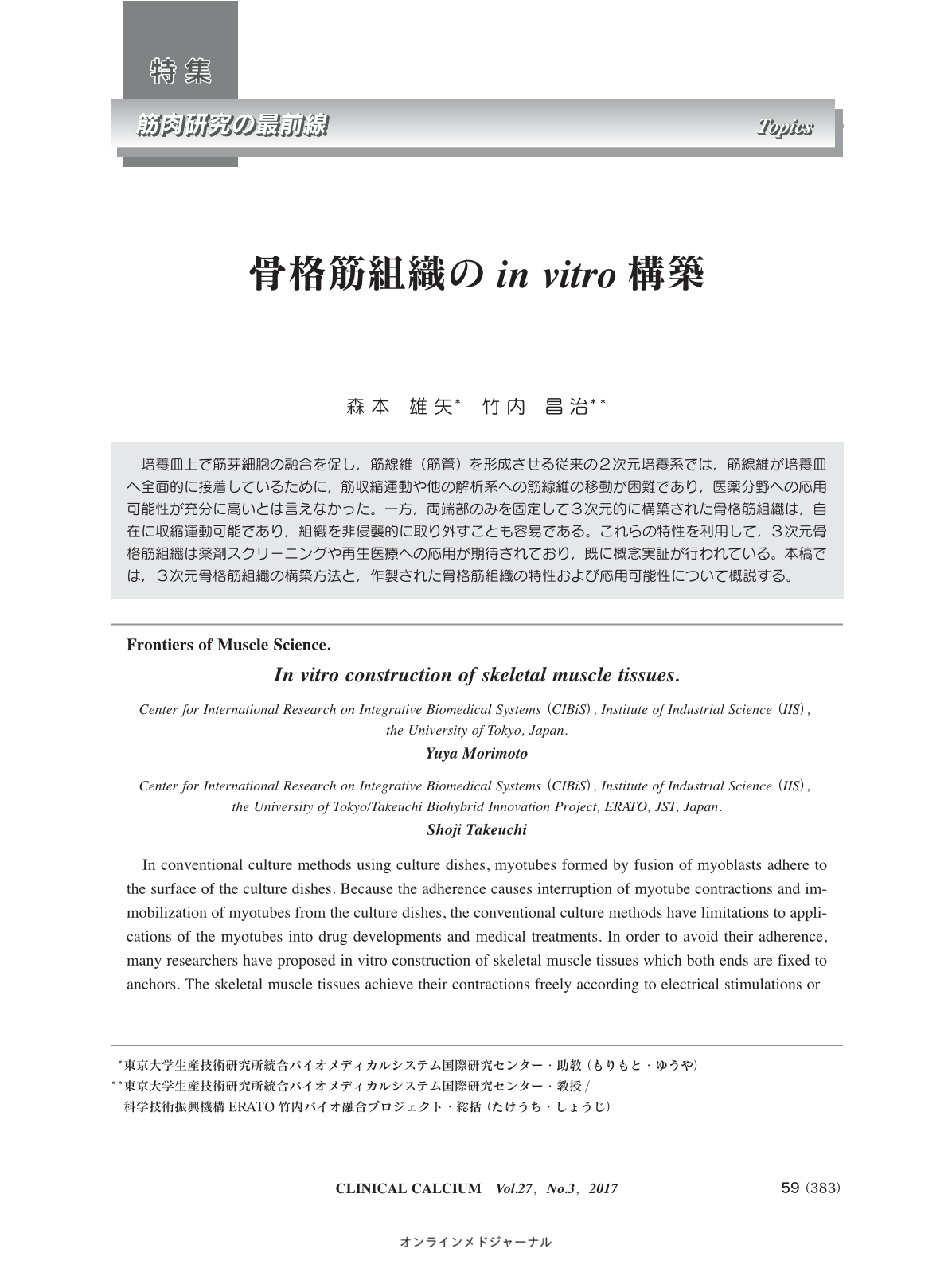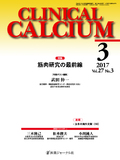Japanese
English
- 有料閲覧
- Abstract 文献概要
- 1ページ目 Look Inside
- 参考文献 Reference
培養皿上で筋芽細胞の融合を促し,筋線維(筋管)を形成させる従来の2次元培養系では,筋線維が培養皿へ全面的に接着しているために,筋収縮運動や他の解析系への筋線維の移動が困難であり,医薬分野への応用可能性が充分に高いとは言えなかった。一方,両端部のみを固定して3次元的に構築された骨格筋組織は,自在に収縮運動可能であり,組織を非侵襲的に取り外すことも容易である。これらの特性を利用して,3次元骨格筋組織は薬剤スクリーニングや再生医療への応用が期待されており,既に概念実証が行われている。本稿では,3次元骨格筋組織の構築方法と,作製された骨格筋組織の特性および応用可能性について概説する。
In conventional culture methods using culture dishes, myotubes formed by fusion of myoblasts adhere to the surface of the culture dishes. Because the adherence causes interruption of myotube contractions and immobilization of myotubes from the culture dishes, the conventional culture methods have limitations to applications of the myotubes into drug developments and medical treatments. In order to avoid their adherence, many researchers have proposed in vitro construction of skeletal muscle tissues which both ends are fixed to anchors. The skeletal muscle tissues achieve their contractions freely according to electrical stimulations or optical stimulations, and transfer of them to other experimental setup by releasing them form the anchors. By combining the skeletal muscle tissues with force sensors, the skeletal muscle tissues are available to drug screening tests based on contractile force as a functional index. Furthermore, survival of the skeletal muscle tissues are demonstrated by implantation of them to animals. Thus, in vitro constructed skeletal muscle tissues is now recognized as attractive tools in medical fields. This review will summarize fabrication methods, properties and medical applicability of the skeletal muscle tissues.



